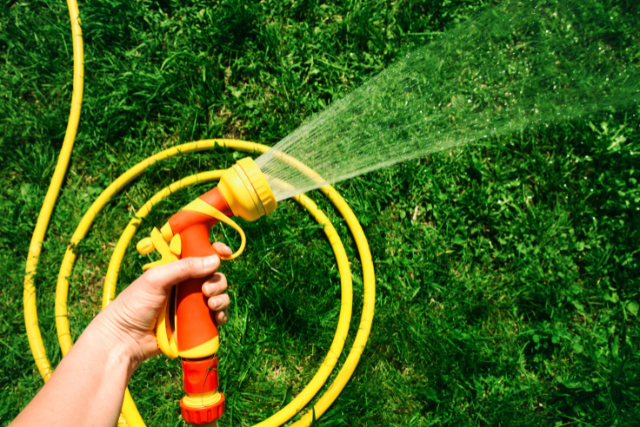
Beat the hosepipe bans: Why potable water tanks are your best defence against water shortages
Whether or not you’re enjoying the successive heatwaves, they’ve sparked concern about dwindling reservoir levels. These heatwaves, following on from England’s driest spring for 132 years, have resulted in Yorkshire Water imposing a hosepipe ban. And more areas are likely to follow suit. However, there’s no need to watch your plants wither or worry about drinking water supplies at home or in your business premises. Reduce your reliance on mains water supply with WRAS-approved potable water tanks.
The reality of Britain’s water crisis
The UK weather is famously unpredictable. After a very soggy 2024, this year couldn’t be more different. Yorkshire saw just 40-43% of its average rainfall for March, April, and May, and with reservoirs at 84% full, there’s now a medium risk of summer shortages.
But this isn’t just a Yorkshire problem. The Environment Agency has been warning water companies across England to protect supplies. When you consider that the average person in England or Wales uses 141 litres of water each day, it’s clear why our water supply is under strain.
Think about your daily routine. A single person household uses approximately 149 litres per day, while a family of four consumes around 450 litres. That’s everything from taking your morning shower to cooking dinner, running the dishwasher, and keeping your garden alive. If water restrictions hit, these activities suddenly become a source of stress rather than a simple routine that you don’t give a second thought.
What are WRAS-approved potable water tanks?
Not all water tanks are equal, particularly when it comes to water that’s safe to drink. WRAS (Water Regulations Advisory Scheme)-approved tanks undergo rigorous testing to ensure they meet stringent UK standards for storing drinking water safely.
The testing ensures they won’t contaminate your water supply and that they can withstand pressure variations and maintain water quality over time. WRAS-approval covers everything from the materials they’re made from to the design of the inlet and outlet systems.
Think of the difference between a WRAS-approved potable water tank and a standard water container as being like a medical-grade storage system versus a garden water butt. Both hold water, but only one is designed and tested for human consumption.
Who can benefit from having a potable water tank?
Homeowners: Imagine never having to worry about hosepipe bans again. Your garden stays green, your family has uninterrupted water supply, and you’re not rushing off to Tesco to stockpile bottled water when restrictions hit. A 1,050-litre tank provides roughly 7 days of emergency drinking water for a family of four.
Businesses: Water restrictions don’t pause for commercial operations. Whether you’re running a restaurant, office, or factory, continuity of water supply means business continuity. Your customers won’t notice the drought if you’re prepared. But they’ll certainly notice if you’re not.
Rural properties: Dealing with unreliable mains pressure or quality issues? Potable water tanks can transform your water security. No more worrying about pump failures or supply interruptions, you’ve got a backup supply that’s ready when you need it.
Choosing your potable water tank
From compact solutions perfect for emergency backup to large-capacity tanks ideal for agricultural use and commercial operations, there’s a potable water tank for your needs.
Every tank in our range is WRAS-approved for drinking water storage, ensuring full compliance with current UK standards and regulations. Our food-grade construction guarantees safe storage whether you’re collecting rainwater, creating backup supplies for homes and businesses, storing water for garden irrigation, or ensuring reliable potable water access in remote locations.
Installation is more straightforward than you might expect. They are designed to integrate easily with existing plumbing systems and can be installed above or below ground depending on your space and preferences. The key is proper positioning to maintain water pressure and accessibility for maintenance.
Speaking of maintenance, these systems are refreshingly low-maintenance. Regular visual inspections, occasional cleaning, and ensuring inlet filters stay clear, that’s about it.
Don’t wait for the next drought
With climate change making our summers hotter and drier, water restrictions are almost inevitable. So it makes sense to be prepared. Don’t just think about surviving the next drought, invest in a potable water tank and know that your supply will be secure. Whatever the weather brings.
Sources:
https://www.gov.uk/government/news/national-drought-group-meets-after-driest-spring-in-132-years
https://uk.news.yahoo.com/yorkshire-water-hosepipe-ban-weather-droughts-england-063426010.html
https://www.water.org.uk/news-views-publications/news/water-you-thinking-brits-way-daily-usage
https://www.uksn.org.uk/post/water-storage-for-emergencies-how-much-do-you-really-need
